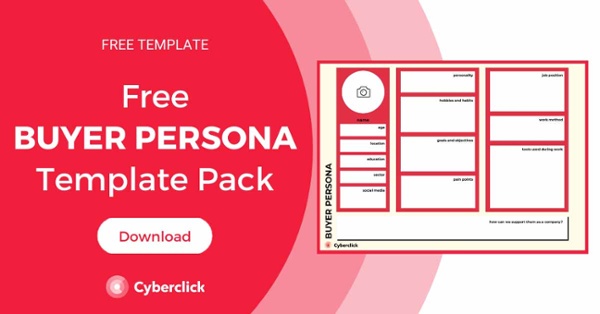Every company or business idea should be summarized into an elevator pitch. Doing this is a great marketing exercise for entrepreneurs and companies that want to gain clarity about their values and goals.
Although at first glance it seems simple to do, building an effective elevator pitch has its tricks. In this article, we'll review the elevator pitch definition, some inspiring examples, and the steps for creating one.
What Is the Elevator Pitch?
The elevator pitch is a 30-60 second speech that introduces a company or a project in an impactful, agile and clear way.
The main objective of an elevator pitch is to generate interest in a project or idea. It is usually given to get the attention of a potential investor or client and encourages him or her to get in touch with the company to arrange a meeting for more information.
Creating an elevator pitch will help you clarify your company's values and plan your marketing actions around them.
The length of the pitch originates from the time it took Warren Buffet to go up from the first floor of the building to his office in the elevator. This was the time entrepreneurs had to convince him to invest in their projects.
The 4 Steps to Create an Effective Elevator Pitch
1. Define Your Target Audience
Every business idea is aimed at a specific target, and knowing how to define your target correctly is the key to success.
The first thing you should do is define your brand's buyer persona or ideal customer–detailing their characteristics, interests, and demographic data. You should give this person a name, choose an image to represent him or her, describe what his or her day-to-day life is like, and specify challenges he or she might face.
Of course, this information should not be in your elevator pitch. Rather, this is a helpful exercise to help you articulate your company's values and strike the right tone when communicating them.
2. Identify the Problem
After nailing down your target, you have to identify what's important to them.
At this point, it is necessary to conduct extensive research on your audience. As a starting point, you can leverage social listening to understand what your audience is talking about. You can complement this with personal interviews and focus groups to get to know your audience on an even deeper level.
This research will help you narrow down your idea and provide you with quotes and data that you can incorporate into your elevator pitch.
3. Develop Your Solution
We've reached the crux of the elevator pitch: your value proposition.
You already have a solution that fits the needs of your target audience. Now, you need to be able to convey it in a way that makes its value clear to both investors and potential customers.
The challenge here is to express what you bring to the table and why your solution is unique. It is important to focus on the benefits to your potential customers and not on the technical features of the product.
4. Compose Your Message
You already have all the information you need to prepare your elevator pitch. Now, the task is to condense it into a 30-60 second speech that summarizes the important points and captures your audience's attention.
You can structure it in the following way:
- Start with an ice-breaker. The first sentence is the key to capturing attention, so you can start with a shocking figure or a question.
- Introduce yourself by briefly explaining who you are and what your company does.
- Describe the problem you are going to solve with your products or services and why it is important.
- Explain what your solution provides.
- Close with a call-to-action that invites the prospect to contact you for more information.
Once you are satisfied with your elevator pitch, remember: practice makes perfect! Practice it out loud to make sure it does not last longer than 60 seconds and that you are conveying everything you want to communicate. A good elevator pitch effortlessly conveys passion and enthusiasm, so give it your all!
8 Examples of Convincing Elevator Pitches
-
Short and to the point: "Work always ends up being chaotic, no matter what industry you're in or how good you are. But with good project management software, you can improve productivity and communication. I haven't missed a deadline for years. If you're interested in how this can help your team, give me a call and I'll tell you more."
-
Based on a statistic: "Did you know that although we have more tools to work remotely than ever before, 60% of employees' time is spent coordinating work, 26% on high-skill tasks and 14% on strategy? Teams need help effectively managing their projects. Implementing project management tools helps employees spend less time coordinating work and more time on the tasks that really matter."
-
With storytelling: "Last year, one of our best clients had to move to a 100% remote model overnight due to the COVID crisis. With our help, they were able to meet all their deadlines, cut the time spent on coordination tasks by 10%, and refocus on key aspects to increase profits, such as strategic planning."
-
Statistic + question: "Every week, more than a quarter of delivery dates (26% to be exact) have to be postponed due to task prioritization issues. But, with the right project management software, that number can be much lower. So the question is: when will your business implement a project management tool?
-
Emotional: "It may seem like project management software is just another tool. But in reality, it connects people with other team members. It also helps create teams that enjoy working together on new projects. The result is a more productive and happier company."
-
At networking events: "Nice to meet you. I'm [your name] from [your company name]. We've been helping teams around the world improve productivity and collaboration for three years. If you ever need help managing projects in your company, please contact me. I think we can help you. Here's my card.
-
Based on questions: "Do you ever get the impression that you spend more time organizing work than working? I've talked to a lot of people who feel the same way. I used to spend many hours a day trying to get organized and prioritize important tasks, too. But you know what? Since I started using a project management tool, I'm much more efficient. Have you ever tried anything like that?"
-
Empathetically: "Nice to finally meet you. How's your company doing? I hear you've been having communication problems. My team and I were going through the same thing, and it was very frustrating. Now we have incorporated project management software into our routine, and teamwork and communication have improved. I hope you can find a solution that works for your team.
CEO y cofundador de Cyberclick. Cuenta con más de 25 años de experiencia en el mundo online. Es ingeniero y cursó un programa de Entrepreneurship en MIT, Massachusetts Institute of Technology. En 2012 fue nombrado uno de los 20 emprendedores más influyentes en España, menores de 40 años, según la Global Entrepreneurship Week 2012 e IESE. Autor de "La empresa más feliz del mundo" y "Diario de un Millennial".
CEO and co-founder of Cyberclick. David Tomas has more than 25 years of experience in the online world. He is an engineer and completed an Entrepreneurship program at MIT, Massachusetts Institute of Technology. In 2012 he was named one of the 20 most influential entrepreneurs in Spain, under the age of 40, according to Global Entrepreneurship Week 2012 and IESE. Author of "The Happiest Company in the World" and "Diary of a Millennial".






.png)
Leave your comment and join the conversation